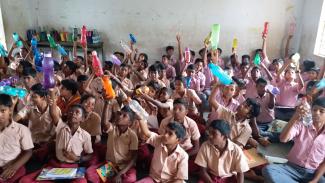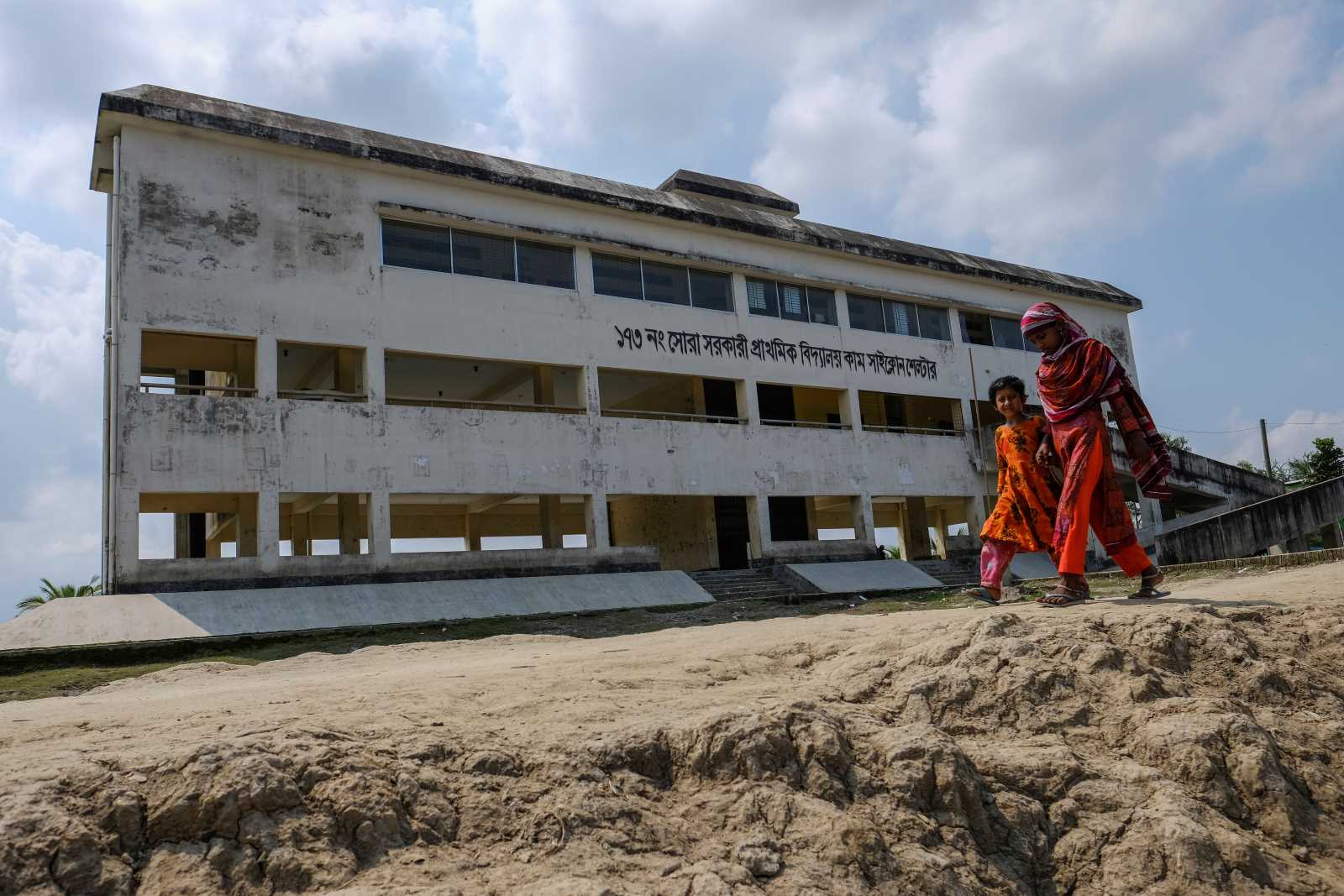Global environment
Waste less to avoid being inundated by plastic

WasteLess is a non-governmental initiative based in the South Indian town of Auroville. As our name indicates, we specialise in teaching people about the issue of waste and emphasise the need to close the tap and reduce the amount of waste we produce.
In particular, we focus on educating children and teenagers. They are an inspiring demographic to work with because they are optimistic, eager to learn and willing to change their ways. In our experience, many of them become drivers of change both at the household and the school level. For example, in one government school in Tamil Nadu, after completing one of our programmes all of the students changed their drinking water bottles from plastic to stainless steel.
In our experience, many people do not understand just how problematic plastic waste is. Plastics are without a doubt one of – if not the – biggest environmental disaster that our planet is facing. Nature does not decompose most of these substances. Long-lasting plastic items thus litter areas that are settled by people. Even worse, the oceans and other wildlife areas are affected too. Over the years, plastic items break down, and as a result, microplastics have been found in the water we drink and the air that we breathe. These tiny particles cause health hazards, some of which have not been thoroughly researched so far.
Around the world, environmentalists are sounding the alarm. For example, social movements have been demanding that single-use plastics be banned. Moreover, they are promoting the use of non-plastic consumer items such as bamboo toothbrushes, jute shopping bags or re-usable drinking straws. Young people are particularly active. Since the next generation will inherit this planet, it is essential to provide them with the knowledge they need to rise up to the environmental challenges they will certainly face. They are, after all, tomorrow’s leaders.
On the precipice
We do our best to educate youth in creative and innovative ways. We believe that the kNOw PLASTICS programme that WasteLess has designed sets international standards in terms of reaching out to schools (see box). Our intention is to help to bring about a global awakening. People need to become aware of the precipice we are standing on. A seemingly endless wave of plastic waste is engulfing our planet and threatening the health of human beings, animals and the natural environment in general.
Despite plastics being an essential item for our lifestyles, most of us know surprisingly little about this material. In 2011, WasteLess developed an educational game called Trash Concentration in cooperation with students. It quickly became apparent that students saw “plastic as plastic”. In their eyes, it was all the same type of material. They could not tell the difference between the plastics used for bags, bottles or toys, for example.
We think it is important for people to know that there are different types of plastics with different impacts on our health and the environment. First invented in 1907, plastic was soon hailed as a wonder material which in fact turned out to be as advertised: indestructible. Ever since, scientists have developed an ever-growing variety of different plastics for different purposes. In recent decades, scientists have also been working on innovative ways to deal with vast quantities of toxic plastic waste being generated. Consumerism pretends that everything is disposable, but the truth is that humankind still lacks an affordable, effective and reliable technology to handle every kind of plastic waste.
There are, of course, many sensationalists headlines. Again and again, media outlets have reported that bacteria eat plastic. It has not been proven, however, that these microorganisms really do break down plastics completely rather than excreting microplastics. Celebrities like David Attenborough, the British director of nature documentaries, therefore insist that we need to act fast in order to get a grip on the plastics problem.
Many different risks
Indestructibility is not the only reason why plastic waste is so difficult to manage. Another reason is that plastics are extremely diverse. They gain their versatile properties such as transparency, flexibility, strength and colour from additives. These additives include highly toxic substances such as bisphenol A, phthalates, brominated flame retardants, polyfluorinated chemicals and vinyl chloride. All endanger the health of people and other organisms. However, the risk is different for different kinds of plastic. Knowledge of the differences helps people to control the risks – not all plastics contain toxic chemical additives.
However, it is not common knowledge that there are seven main categories of plastic. Nor is it generally known that consumers can actually tell one from the other quite easily. The international standard is that plastic items must be marked with a number in a chasing-arrow triangle. This code was initiated by a plastic lobby group in 1988 to help recyclers tell plastic apart. Resin code #1-#6 mark individual types of plastic while those in the “catch all” category of resin code #7 are new types of plastic that do not fit in the first six categories.
WasteLess, through its testing and participatory design processes, has chosen to use these resin codes and teach children how to avoid “unsafe” plastics: beware of resin codes #3, #6 and #7! Children want to understand the world they live in, and curiosity is a powerful driver for self-motivated learning. Once kids understand the resin code, they start checking plastic items on their own, without teachers having to tell them to do so. The code also helps them to figure out whether a plastic object was designed for one time use or if it is of longer-term value. The science is clear. Consumption habits must change, and the throw-away mentality must end. Young students are eager to follow the science.
Unfortunately, the resin code is not marked on plastic items consistently in all countries. Inter-governmental cooperation on issues of this kind must improve (see Hans-Christian Stolzenberg in the Focus section of D+C/E+Z 2021/03). At the same time, environmental education is critical for the future of our planet. We can no longer ignore the warning signs – and we at WasteLess are doing our best to sound the alarm.
Mukta Martens is a content developer and editor with WasteLess in Auroville.
https://wastelessindia.org











